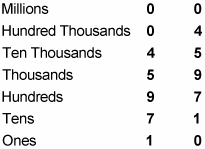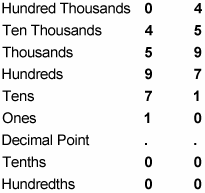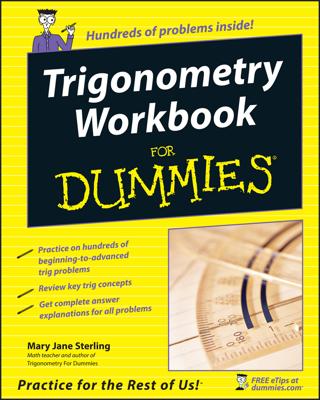When you’re working with whole numbers, you can multiply or divide any number by 10 just by moving the decimal point to the right or left, respectively. When you multiply by moving the decimal point to the right, you also need to add a zero to the end of it. For example:
45,971 10 = 459,710
To see why this answer is so, think about the place value of digits and look at the following list, which shows the numbers in the above equation.

Here’s what these two numbers really mean:
45,971 = 40,000 + 5,000 + 900 + 70 + 1
459,710 = 400,000 + 50,000 + 9,000 + 700 + 10 + 0
As you can see, that little zero makes a big difference, because it causes the rest of the numbers to shift over one place.
This concept makes even more sense when you think about the decimal point. See the following list showing the result of shifting the numbers over one place.

In effect, adding a 0 to the end of a whole number moves the decimal point one place to the right. So, for any decimal, when you move the decimal point one place to the right, you multiply that number by 10. This becomes clear when you start with a simple number like 7:

In this case, the net effect is that you moved the decimal point three places to the right, which is the same as multiplying 7 by 1,000.
Similarly, to divide any number by 10, move the decimal point one place to the left. For example:
This time, the net effect is that you moved the decimal point three places to the left, which is the same as dividing 7 by 1,000.

